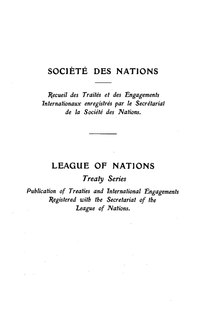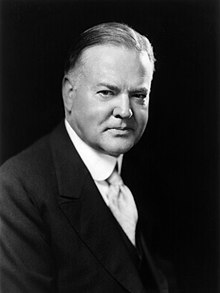User:Natashasgallant/sandbox
| Geneva Conference 1932 | |
|---|---|
| Begins | 1st of Feburary 1932 |
| Ends | November 1934 |
| Location(s) | Geneva |
| Country | Switzerland |
| Participants | 31 Nations including the USSR, The United States, Germany and Great Britain |
| Organised by | The League of Nations |
Background[edit]
Arms development[edit]
During World War One, the world and Europe in particular underwent a vast arms development. During the course of the war, technology surrounding weaponry development and new types of arms emerged. Specifically, a focus not only on land equipment and personal but on naval and air force which Borg, describes as having “considerable weight and influence”[1]. The aim of the Geneva Conference 1932 was disarmament targeting military (land), air and naval programs (Covent of the League of Nations Article 8)[2].
Death toll of World War One[edit]
Whilst exact numbers are unknown, historical researches places the amount of people (both civilian and military) who died in World War One at 37.5 million[3].
| Country | Total deaths/missing military personnell |
|---|---|
| Soviet Union | 1 900 000 |
| Germany | 1 800 000 |
| France | 1 200 000 |
| Austria Hungary | 900 000 |
| Great Britian | 900 000 |
| Italy | 450 000 |
| America | 50 000 |
| Total | 'c. 37.5 million |
Antiwar sentiment[edit]
Following World War One, the extensive death toll and social effects of ‘total war’ resulted in a general antiwar sentiment and encouraged the general sentiment of disarmament. The British Women’s Society received 8 million signatures in support of disarmament and are accredited with a driving force behind the convening of the Conference[4].

The Treaty of Versailles[edit]
The Treaty of Versailles was signed on June the 28th 1919 and laid out the terms for the Germans conditional surrender in World War One, including their national disarmament.
Notable clauses[edit]
- Article 160: German army to have no more than 7 divisions of infantry, 3 of calvary, no more than 100 000 men, officers must not exceed 4000
- Article 165: limits of guns, machine guns, ammunition, and rifles
- Article 168: limited manufacture of munitions (to be overseen by the League of Nations)
- Article 170: limited any importation of arms[5]
The Geneva Conference 1932 intended on enacting the terms of the Treaty of Versailles, specific to Germany.
Involved Nations[edit]
The Geneva Conference 1932 involved all nations signatory to the Covenant of the League of Nations. This included the United States, Great Britain, France, Italy, and Japan as permanent member of the League of Nations Council[2]. All Allies who signed the Peace Treaty of Versailles, including Germany[6]. And all ‘war neutral’ parties such as Switzerland who had vested interest in disarmament in Europe specifically[6].
The League of Nations[edit]
According to Gumbrecht the League of Nations was created with “the ideal of establishing a family of nations united by shared goals of peace[7]”. The Covenant of the League of nations was published on the 28th of April 1919 by unanimous agreement.

Article 8 of the Covenant of the League of Nations states “the members of the League recognise that the maintenance of peace requires the reduction of national armaments to the lowest point consistent with national safety and the enforcement by common action of international obligations”[6]. The Geneva Conference 1932 was convened by the League of Nations with the intention of fulfilling the terms of article 8 and progressing towards global peace via the process of disarmament.
Negotiations[edit]
The conference convened on the 1st of February 1932 in Geneva, Switzerland. The intention of the Conference was implementing strategies to fulfill Article 8 of the Covent of the League of Nations[6].
Classifying weaponry[edit]
The Covent of the League of Nations defined ‘National Armaments’ as referring to generalised military forces including personnel, equipment, technology etc[6]. The Conference intended to differentiate between offensive and defensive weapons. The negotiations centred largely on the offensive weapons, as a means to stop future attacks rather that reduce the defensive capabilities of nations[8]. However, nations often disagreed about the technicalities of certain weaponry.
Sir Basil Liddell Hart (B. H. Liddell Hart), a British Military Historian who was known largely for his strategy surrounding mechanical warfare[9] was present at the conference. He contended that tanks (a new development of World War One) were both offensive and defensive weapons and could thus, not be classified as either[8]. However, Winston Churchill disagreed, arguing that the offensive capabilities of tanks were tremendous and outweighed any defensive capabilities[8]. This kind of turmoil and inability to agree, halted the progression of the conference[8].
Fortifications[edit]
A key negotiation of the conference involved the discussions surrounding armed fortifications. It was agreed, unanimously, that any fortifications remaining from World War One (developed during the war, not before) along borders had to be abolished[8]. Additionally, coastal fortifications (except between the Baltic Sea and North Sea) could remain but not be worked on, extended or built up[8].
The Hoover Proposal[edit]

US President Herbert Hoover, acknowledged the failure and lack of progression of the Conference thus far and proposed for the US to take the lead on disarmament[10]. As argued by Marlies ter Borg the proposal that Hoover presented to the conference on the 22nd of June 1932 was a “potential turning point”[8]. The proposal suggested that the US would abolish all aircraft, submarines, military aviation, tanks, poison gas and reduce one-third of battle ships[10]. However, these proposals were never passed through US Congress and whilst showed promise and the spirit of disarmament, did not resonate in the Conference[8].
Problems with the negotiations[edit]
There was a failure to obtain a German-French agreement on German arms status as the French did not want to disarm without a guaranteed alliance if war broke out with Germany again[1]. Czechoslovakia and Poland were vulnerable because of their geographical proximity to Germany and fear that they would be attacked by the allies again with no way to defend themselves if they disarmed[11].
Additionally, Japan invaded Manchuria on the 18th of September 1931 after the Mukden Incident and were subsequently hesitant and hostile to the idea of disarming. Ultimately, Japan disagreed with the whole idea of disarmament and were not present or involved with negotiations[1].
Departure of Germany[edit]

Adolf Hitler German: [ˈadɔlf ˈhɪtlɐ] ⓘ came to power in March 1933 and quickly gained complete authority over the German government. He withdrew Germany from the League of Nations and subsequently the Geneva Conference in October of 1933. Military superiority of German was a defining element of Hitler’s ideology and foreign policy, the idea of disarmament was unacceptable[12]. As soon as Hitler rose to power, he began the process of rearming Germany, clearly defying the Treaty of Versailles and furthermore, the objective of the Disarmament Conference[12]. Hitler drew on the unwillingness of other countries to disarm as justification that Germany shouldn’t either[13].
Outcomes[edit]
Ultimately, when Hitler withdrew Germany from the League of Nations and the Treaty of Versailles the French were unwilling to disarm[11]. The conference was ultimately adjourned in November 1934. The British Foreign Office stated that “the failure of the Disarmament Conference would have incalculable consequences for Europe and the League [of Nations]”[14].
It is not clear, or unanimously agreed upon as to why exactly the conference failed. However, the majority of academic source and historians blame a combination of the rise of Hitler and withdrawal of Germany from the conference, general unwillingness of nations to disarm, highly unstable political and economic climate and the looming threat of another World War.
See also[edit]
- World Disarmament Conference
- London Naval Treaty
- Second London Naval Treaty
- Washington Naval Conference
References[edit]
- ^ a b c Stevenson, David (2016-01-01), "Land Armaments in Europe, 1866–1914", Arms Races in International Politics, Oxford University Press, pp. 41–60, ISBN 978-0-19-873526-7, retrieved 2020-05-21
- ^ a b "II. The Covenant of the League of Nations", The League of Nations and Miscellaneous Addresses, Columbia University Press, pp. 21–110, 1923-12-31, ISBN 978-0-231-89509-5, retrieved 2020-05-21
- ^ a b "World War I - Killed, wounded, and missing". Encyclopedia Britannica. Retrieved 2020-05-21.
- ^ Webster, Andrew (2006-08-19). "From Versailles to Geneva: The many forms of interwar disarmament". Journal of Strategic Studies. 29 (2): 225–246. doi:10.1080/01402390600585050. ISSN 0140-2390.
- ^ "The Treaty of Versailles". 1919-06-28.
{{cite web}}: CS1 maint: url-status (link) - ^ a b c d e "League of Nations - The Covenant". Encyclopedia Britannica. Retrieved 2020-05-21.
- ^ Gumbrecht, Hans U., author. (1998-02). In 1926 - Living on the Edge of Time. Harvard University Press. ISBN 0-674-00055-2. OCLC 1066536066.
{{cite book}}:|last=has generic name (help); Check date values in:|date=(help)CS1 maint: multiple names: authors list (link) - ^ a b c d e f g h Borg, M. T (1992). "Reducing Offensive Capabilities - the Attempt of 1932". Journal of Peace Research. 29 no 2: 145–160 – via JSTOR.
- ^ "Sir Basil Liddell Hart | British military historian". Encyclopedia Britannica. Retrieved 2020-05-21.
- ^ a b "Foreign Relations of the United States Diplomatic Papers, 1932, General, Volume I - Office of the Historian". history.state.gov. Retrieved 2020-05-21.
- ^ a b James, Alan (1986). "The League of Nations: its life and times, 1920–1946". International Affairs. 63 (1): 101–102. doi:10.2307/2620241. ISSN 1468-2346.
- ^ a b Müller, Rolf-Dieter; Ancker, Janice W. (2016-08-15), "The Military in the Totalitarian Führer State", Hitler's Wehrmacht, 1935-1945, University Press of Kentucky, pp. 7–42, ISBN 978-0-8131-6738-1, retrieved 2020-05-21
- ^ Edelstein, David M. (2017-09-15), "The Resurgence of Interwar Germany", Over the Horizon, Cornell University Press, ISBN 978-1-5017-0756-8, retrieved 2020-05-21
- ^ Bennett, Edward W. (2015-12-31). German Rearmament and the West, 1932-1933. Princeton: Princeton University Press. ISBN 978-1-4008-7199-5.
